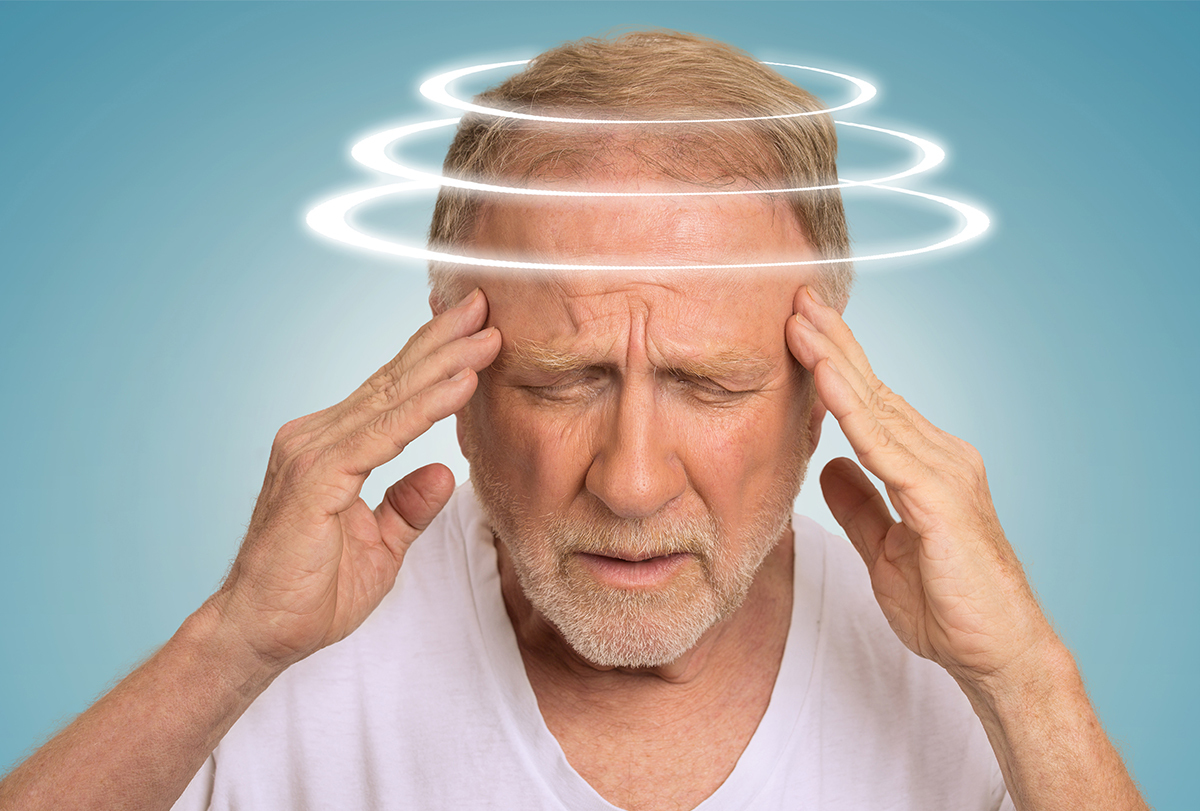Vertigo medical condition – Vertigo, a medical condition characterized by a sensation of spinning or dizziness, can significantly impact daily life. This guide delves into the causes, symptoms, diagnosis, and treatment options for vertigo, providing a comprehensive understanding of this condition.
Definition of Vertigo
Vertigo is a medical condition that causes a false sensation of spinning or moving, even when you are standing still. It can be a very disorienting and distressing experience.
Vertigo is not the same as dizziness. Dizziness is a general feeling of lightheadedness or unsteadiness. Vertigo, on the other hand, is a specific type of dizziness that is characterized by the sensation of spinning or moving.
Causes of Vertigo, Vertigo medical condition
There are many different causes of vertigo, including:
- Inner ear problems, such as Meniere’s disease or labyrinthitis
- Problems with the brain, such as a stroke or a tumor
- Neck problems, such as whiplash
- Certain medications, such as aspirin or antibiotics
- Alcohol consumption
Causes of Vertigo

Vertigo is a symptom, not a disease, caused by a disruption in the balance system of the inner ear or brain. Understanding the underlying causes is crucial for effective treatment.
The most common cause of vertigo is benign paroxysmal positional vertigo (BPPV), which occurs when tiny calcium crystals in the inner ear become dislodged and move into the wrong channels, causing dizziness when the head moves in certain positions.
Medical Conditions
- Vestibular neuritis: An inflammation of the vestibular nerve, causing sudden onset of severe vertigo, nausea, and vomiting.
- Ménière’s disease: A chronic inner ear disorder characterized by episodes of vertigo, hearing loss, and tinnitus.
- Migraine-associated vertigo: Migraine headaches can trigger vertigo as an accompanying symptom.
- Multiple sclerosis: A neurological condition that can affect the vestibular system, causing vertigo and balance problems.
Vestibular System
The vestibular system is a sensory system in the inner ear that helps maintain balance and spatial orientation. It consists of fluid-filled canals and sensors that detect head movements and send signals to the brain. When the vestibular system is disrupted, it can lead to vertigo.
Symptoms of Vertigo

Vertigo is a common condition that can affect people of all ages. It is characterized by a sensation of spinning or dizziness, and it can be caused by a variety of factors. The symptoms of vertigo can vary depending on the underlying cause, but some of the most common symptoms include:
- A feeling of spinning or dizziness
- Nausea and vomiting
- Balance problems
- Coordination problems
- Headaches
- Tinnitus (ringing in the ears)
- Blurred vision
Vertigo can have a significant impact on daily activities. It can make it difficult to walk, drive, or even perform simple tasks like cooking or cleaning. In some cases, vertigo can even lead to falls and other injuries.
Diagnosis of Vertigo
The diagnosis of vertigo involves a combination of medical history, physical examination, and various diagnostic tests. The aim is to determine the underlying cause of the symptoms and rule out any other potential conditions.
Physical Examination and Medical History
A thorough physical examination is essential to assess the patient’s overall health and identify any signs or symptoms that may be indicative of vertigo. The doctor will check the patient’s balance, coordination, and eye movements. They will also listen to the patient’s heart and lungs and examine their ears, nose, and throat.
The medical history is also important in diagnosing vertigo. The doctor will ask the patient about their symptoms, including when they started, how often they occur, and what makes them worse or better. They will also ask about any recent head injuries, ear infections, or other medical conditions that may be related to vertigo.
Imaging Tests
Imaging tests, such as MRI or CT scans, may be used to visualize the inner ear and brain and look for any abnormalities that may be causing vertigo. These tests can help to rule out conditions such as tumors, strokes, or bleeding in the brain.
Balance Assessments
Balance assessments are used to evaluate the patient’s balance and coordination. These tests may involve standing on one leg, walking in a straight line, or performing other tasks that require balance. Balance assessments can help to identify any problems with the vestibular system, which is responsible for maintaining balance.
Treatment Options for Vertigo
Vertigo, a debilitating condition characterized by dizziness and balance problems, can significantly impact an individual’s quality of life. Fortunately, there are various treatment options available to alleviate symptoms and address the underlying cause.
Treatment strategies for vertigo encompass a range of approaches, including medications, physical therapy, and surgical interventions. The effectiveness of these treatments varies depending on the underlying cause of vertigo and the individual’s response.
Vertigo is a medical condition that can cause dizziness, lightheadedness, and loss of balance. If you are experiencing these symptoms, it is important to see a doctor to rule out any underlying medical conditions. Your doctor may recommend medications to help relieve your symptoms.
To learn more about what medicine to take for dizziness, visit this link . Vertigo can be a debilitating condition, but with the right treatment, you can manage your symptoms and live a full and active life.
Medications
- Anti-nausea medications:These drugs, such as meclizine and promethazine, help control nausea and vomiting associated with vertigo.
- Vestibular suppressants:These medications, including diazepam and lorazepam, reduce activity in the vestibular system, which is responsible for balance.
- Diuretics:These drugs, such as furosemide, can help reduce fluid buildup in the inner ear, which can contribute to vertigo.
Physical Therapy
Physical therapy plays a crucial role in managing vertigo by improving balance and reducing dizziness. Exercises may include:
- Vestibular rehabilitation exercises (VRT):These exercises aim to retrain the vestibular system to compensate for imbalances.
- Balance training:This involves exercises that challenge balance and stability, such as standing on one leg or walking on uneven surfaces.
- Neck exercises:Certain neck exercises can help improve posture and reduce pressure on the nerves that contribute to vertigo.
Surgical Interventions
In rare cases, surgery may be necessary to treat vertigo. Surgical procedures include:
- Labyrinthine surgery:This procedure involves removing or repairing damaged parts of the inner ear, such as the semicircular canals or otoliths.
- Vestibular nerve section:This surgery involves cutting the vestibular nerve, which sends balance information from the inner ear to the brain.
It is important to note that the effectiveness of any treatment option depends on the underlying cause of vertigo. Therefore, it is crucial to consult a healthcare professional for proper diagnosis and personalized treatment recommendations.
Prevention of Vertigo: Vertigo Medical Condition

Vertigo is a common condition that can be debilitating, but there are several lifestyle modifications you can make to help prevent it. These include:
- Managing your diet:Eating a healthy diet that is low in sodium and rich in fruits, vegetables, and whole grains can help to reduce your risk of developing vertigo.
- Getting regular exercise:Exercise can help to improve your balance and coordination, which can help to prevent vertigo.
- Managing stress:Stress can be a trigger for vertigo, so it is important to find ways to manage stress in your life.
- Getting regular medical checkups:Regular medical checkups can help to identify and treat any underlying medical conditions that may be contributing to your vertigo.
In addition to these lifestyle modifications, there are a few other things you can do to help prevent vertigo, such as:
- Avoid sudden movements:Sudden movements can trigger vertigo, so it is important to avoid them as much as possible.
- Get enough sleep:When you are tired, you are more likely to experience vertigo.
- Avoid alcohol and caffeine:Alcohol and caffeine can both trigger vertigo.
Concluding Remarks
Managing vertigo requires a multifaceted approach that addresses both the symptoms and underlying causes. By implementing lifestyle modifications, seeking appropriate medical care, and following recommended treatment plans, individuals can effectively manage vertigo and improve their overall well-being.
